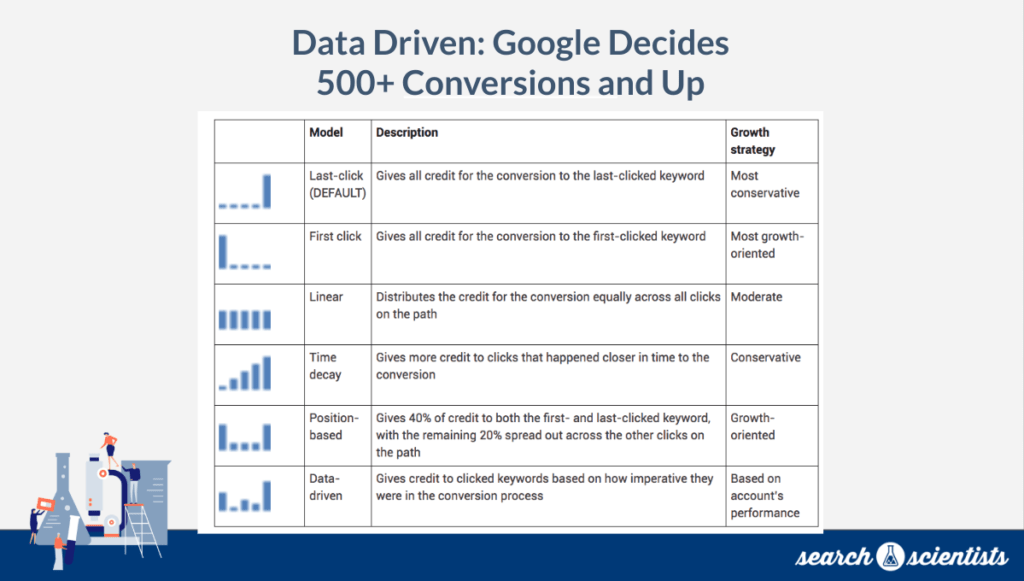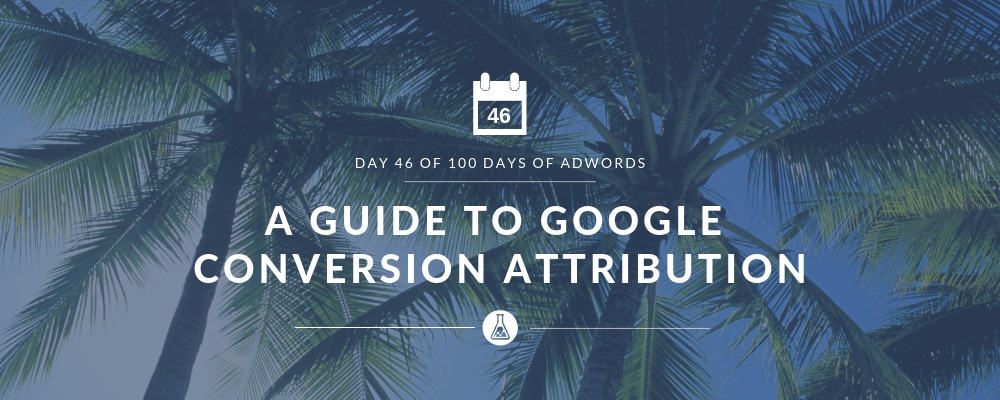A customer’s path to purchase is usually a hard one to follow. As an advertiser, it’s hard to know what to attribute to a conversion. Back in Day 4 of AdWords Help, I discussed why conversion tracking is important, but we at Search Scientists still get this question a lot: How do you know how to attribute your conversions for your Google Ads?
The answer: Conversion Attribution Modeling

The Benefits of Google’s Conversion Attribution Modeling
Knowing where your conversions came from is an instant benefit. According to Google, most sellers measure the success of their ads on a “last click” basis and ignore the clicks customers may have made on the way to a purchase.
Attribution models allow you to know the whole purchase cycle, reach the customer sooner in the buying process, and improve your bidding.
What Are the types of attribution models for google ads?
There are 6 major types of conversion attribution models on Google.
1. Last Click Attribution (Default)
2. First Click Attribution
3. Linear Attribution
4. Time Decay Attribution
5. Position-Based Attribution
6. Data-Driven Attribution
Last Click Attribution
Last Click Attribution is what most eCommerce sellers use to measure the success of their ads. This attribution model’s growth strategy is the most conservative, meaning it will keep your Google Ads account the smallest.
First Click Attribution
This attribution model is the opposite of the Last Click Attribution Model and is the most growth oriented because it gives credit to customers who found your product at the top of the sales funnel.
Linear Attribution
Linear Attribution distributes the credit for conversions equally across the path to purchase. This kind of acts as an answer to the faults of the Last Click and First Click Attribution Models. This attribution model is good for a moderate growth strategy.
Time Decay Attribution
Time Decay means the clicks closer to the conversion receive more credit. This is another conservative growth strategy model because it’s centered around the bottom of the sales funnel.
Position Based Attribution
This is a growth-oriented attribution model. This model gives 40% of the credit to the first and last-clicked keyword with the remaining 20% spread out among other clicks.
Data-Driven Attribution
Lastly, there’s Data-Driven Attribution. This model gives credit to clicked keywords based on how important they were in the buying process. The amount of growth associated with this type of attribution model is based on the account’s performance.

Check back for more Google Ads help and subscribe to our YouTube channel to get more videos on a weekly basis!
Here’s Day 45 of AdWords Help discussing ad groups in case you missed it.


